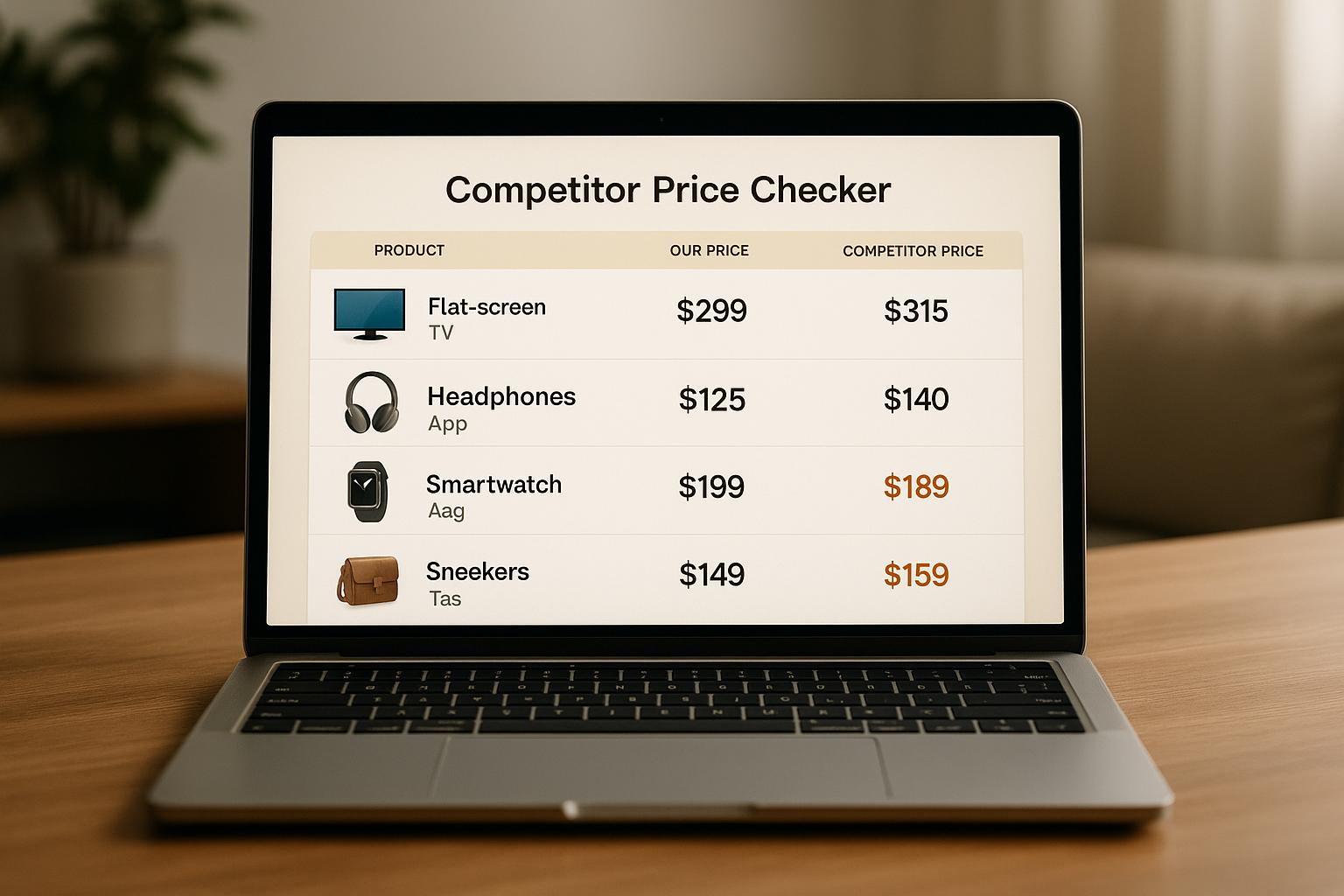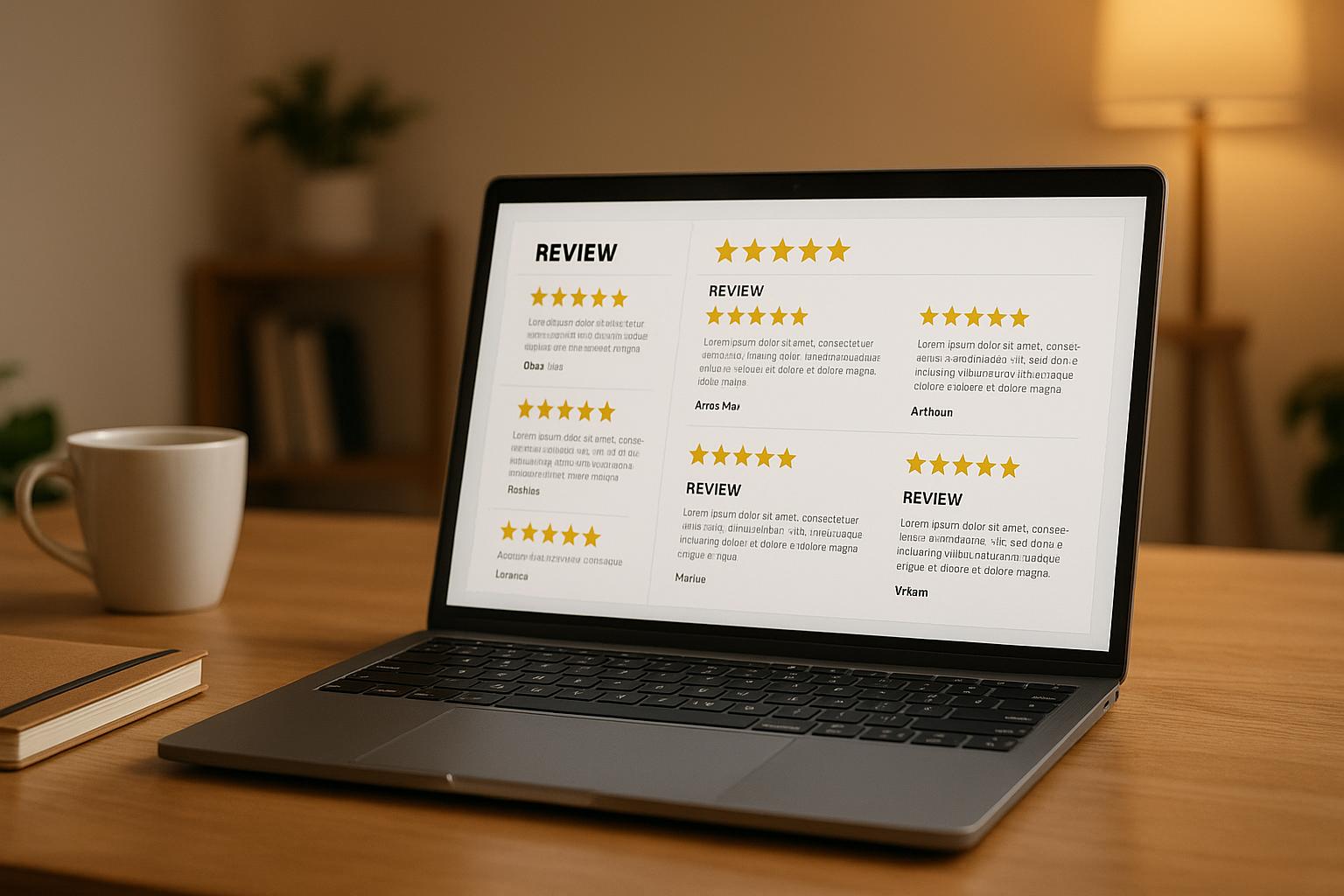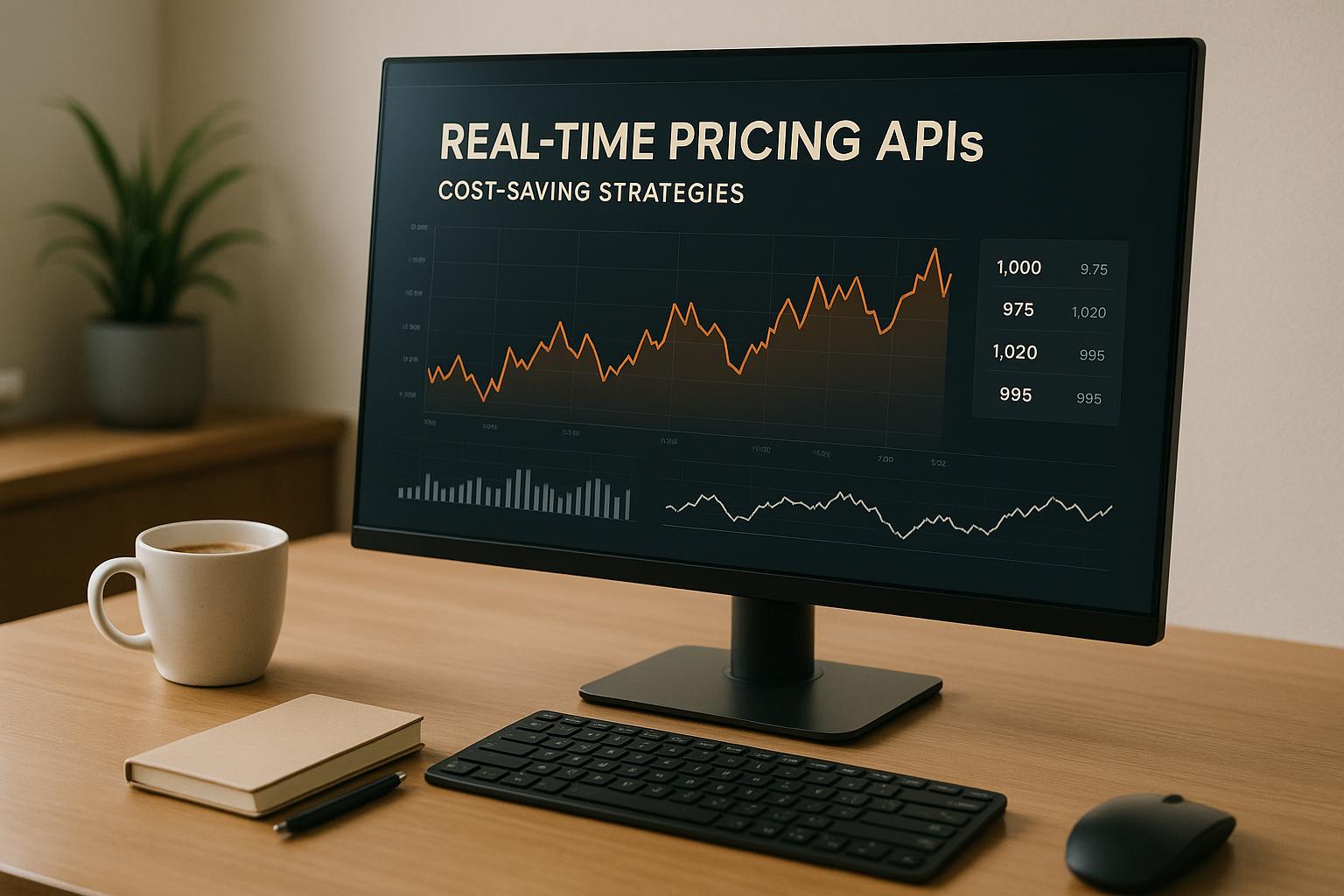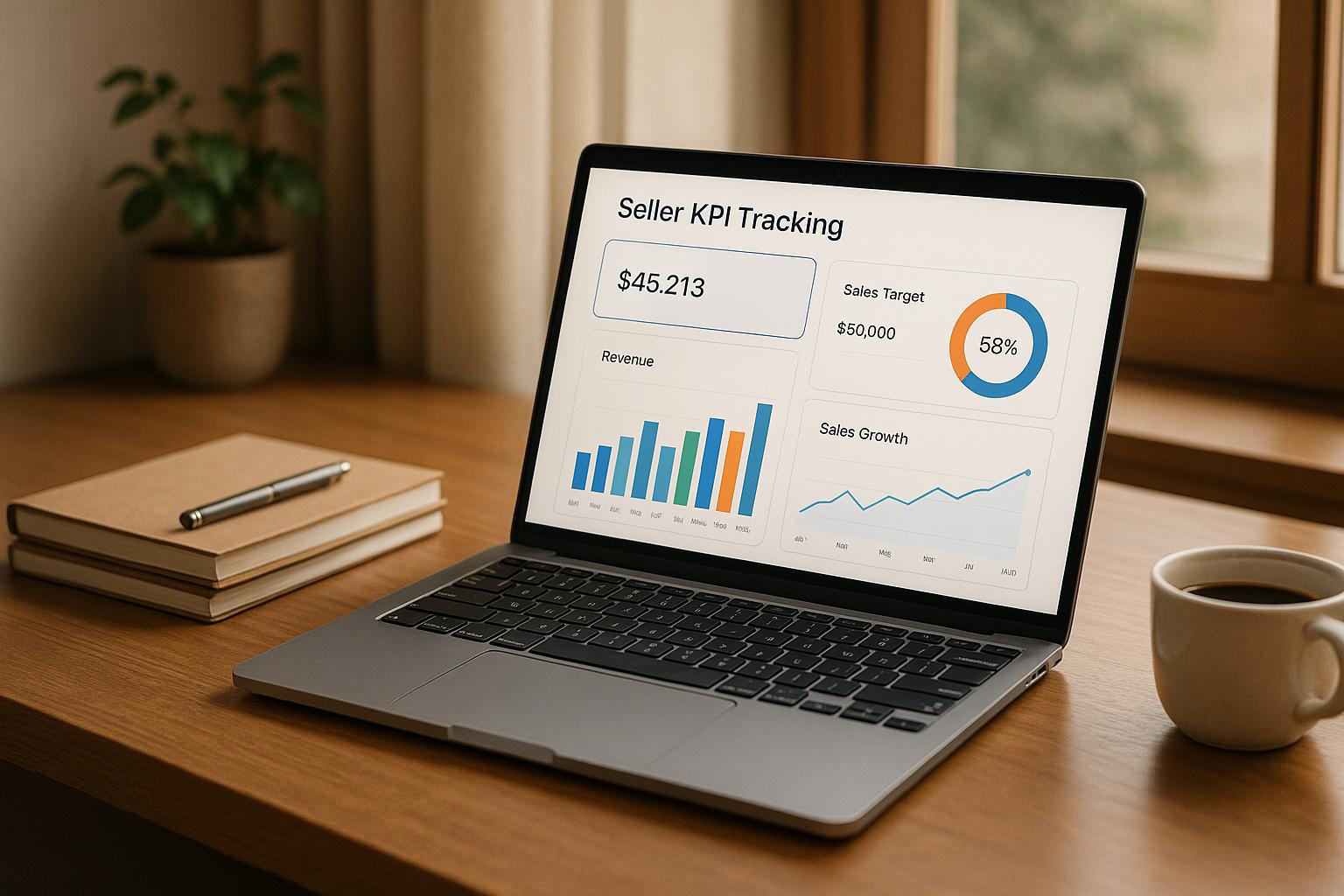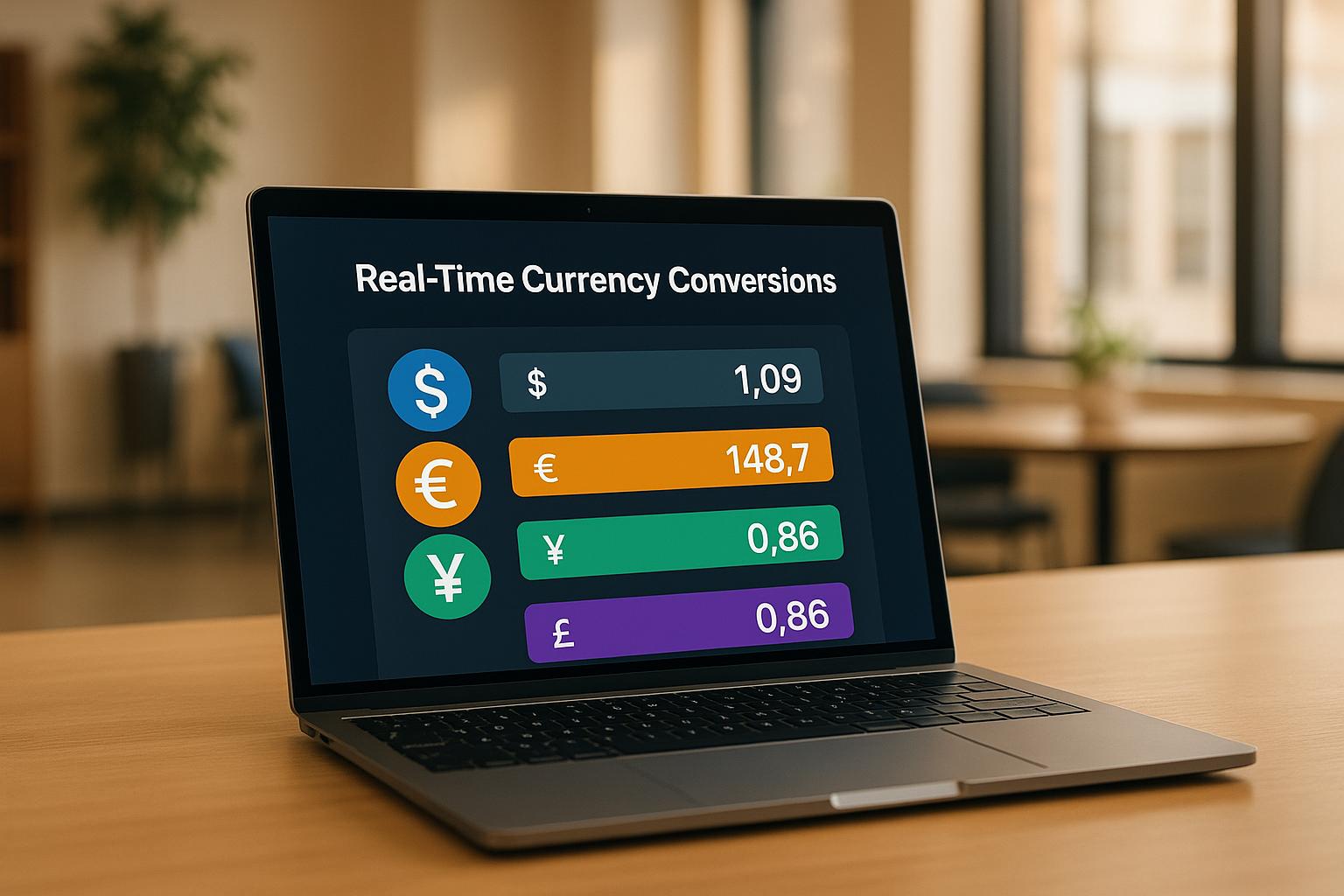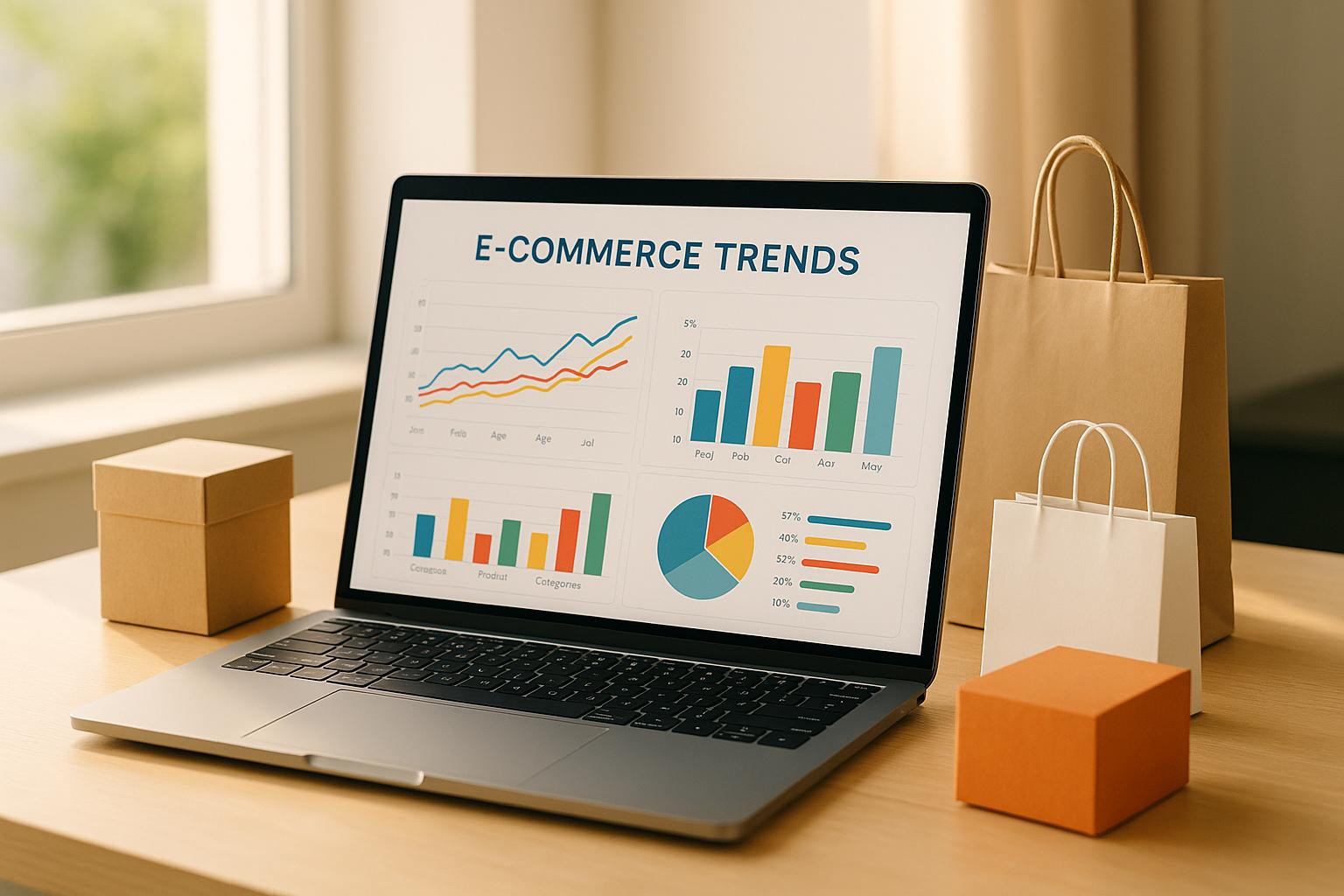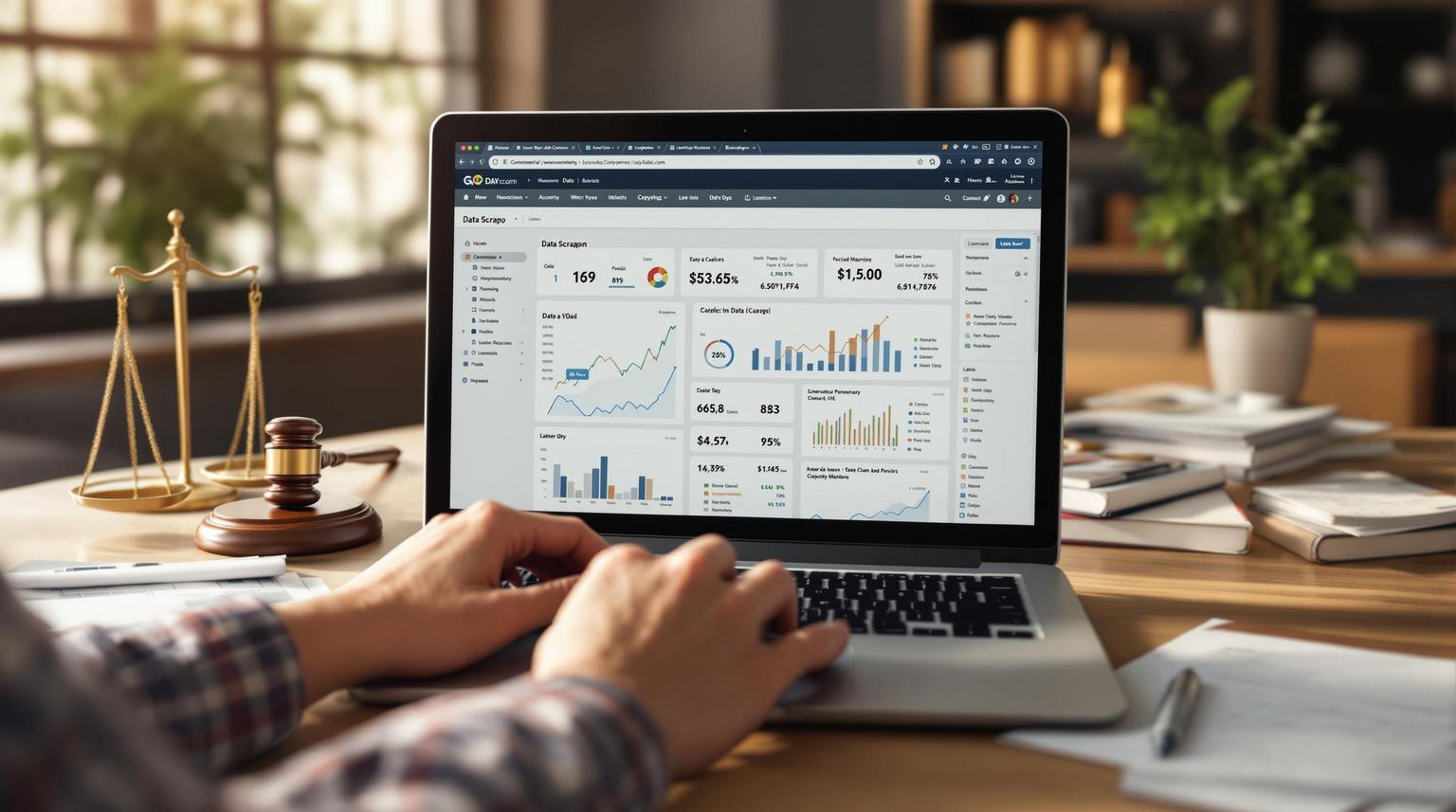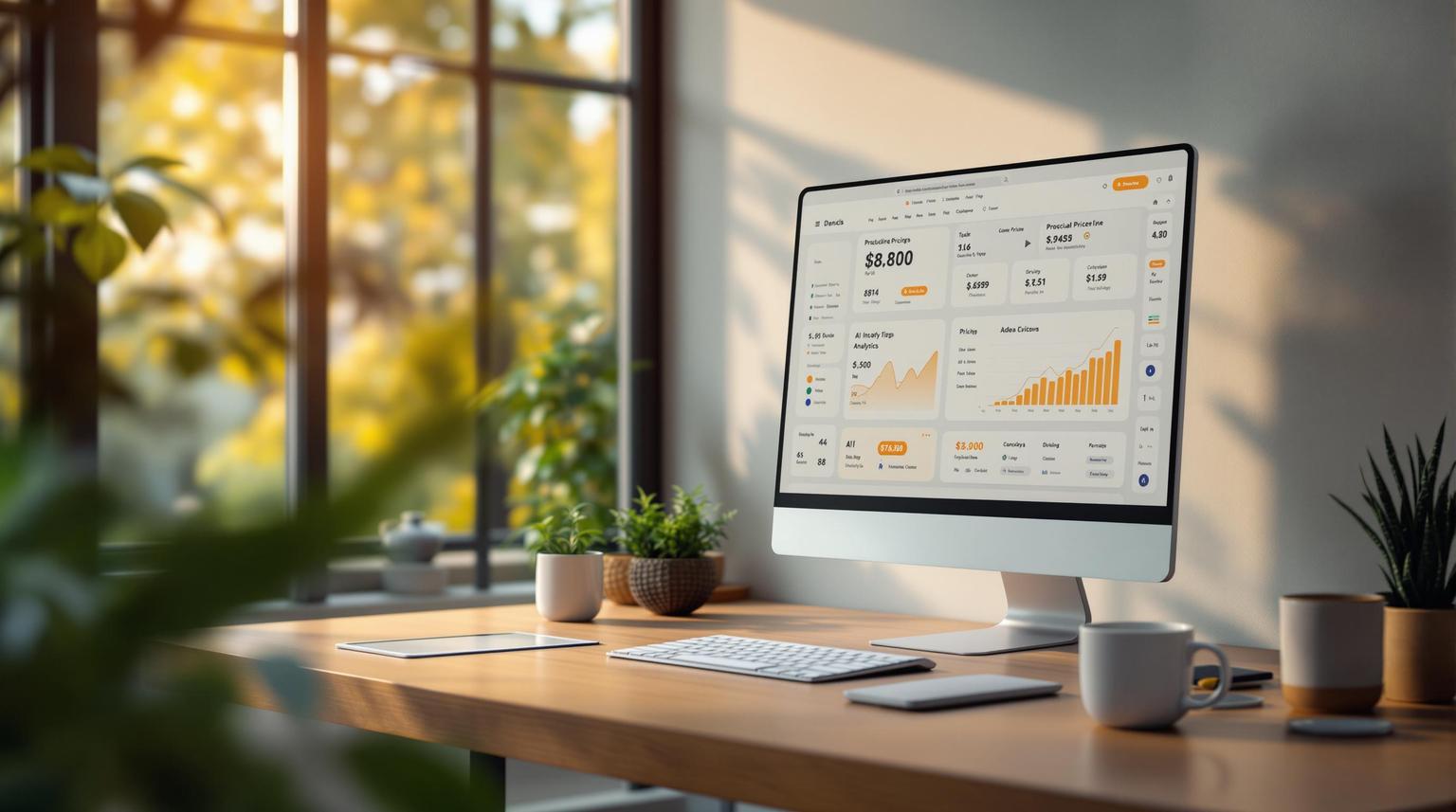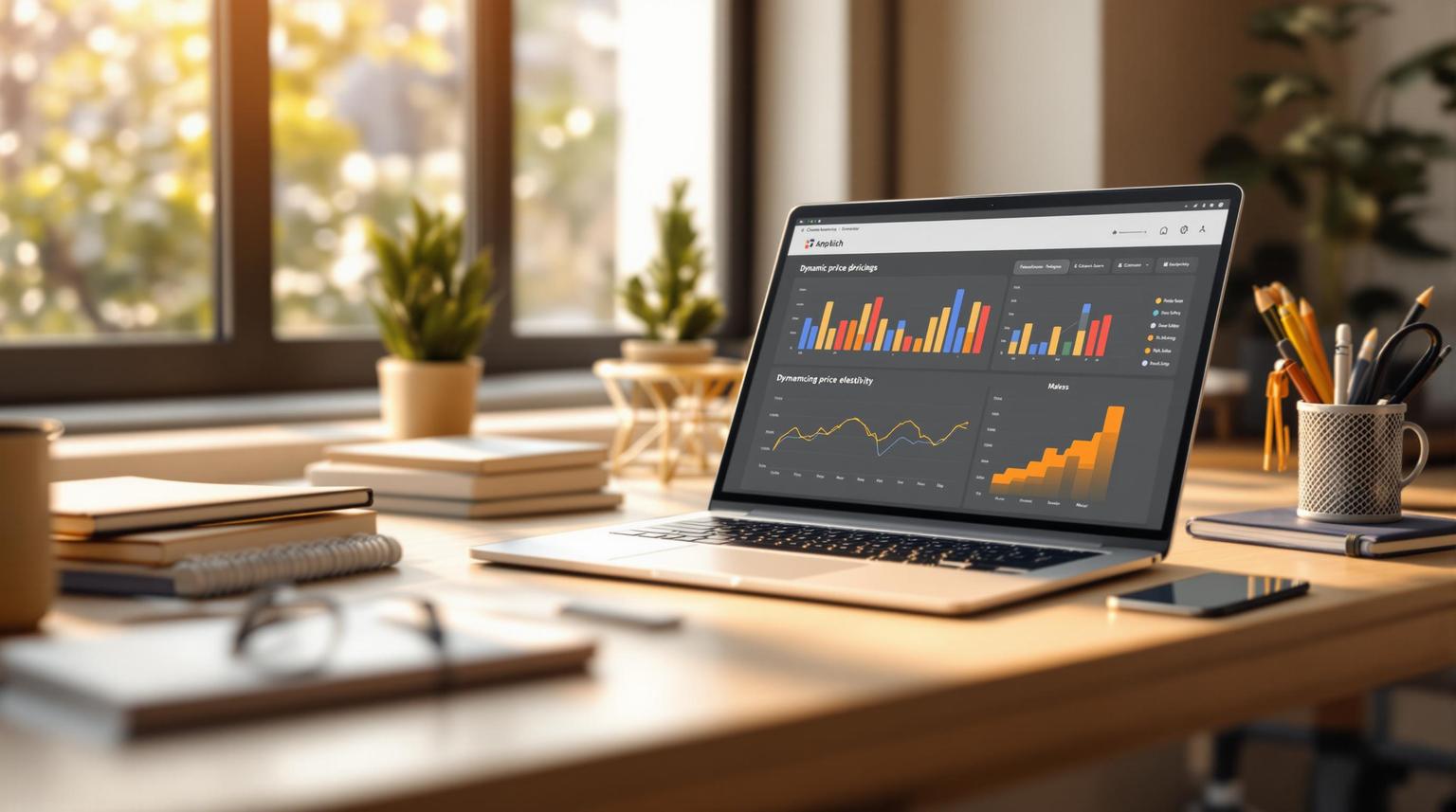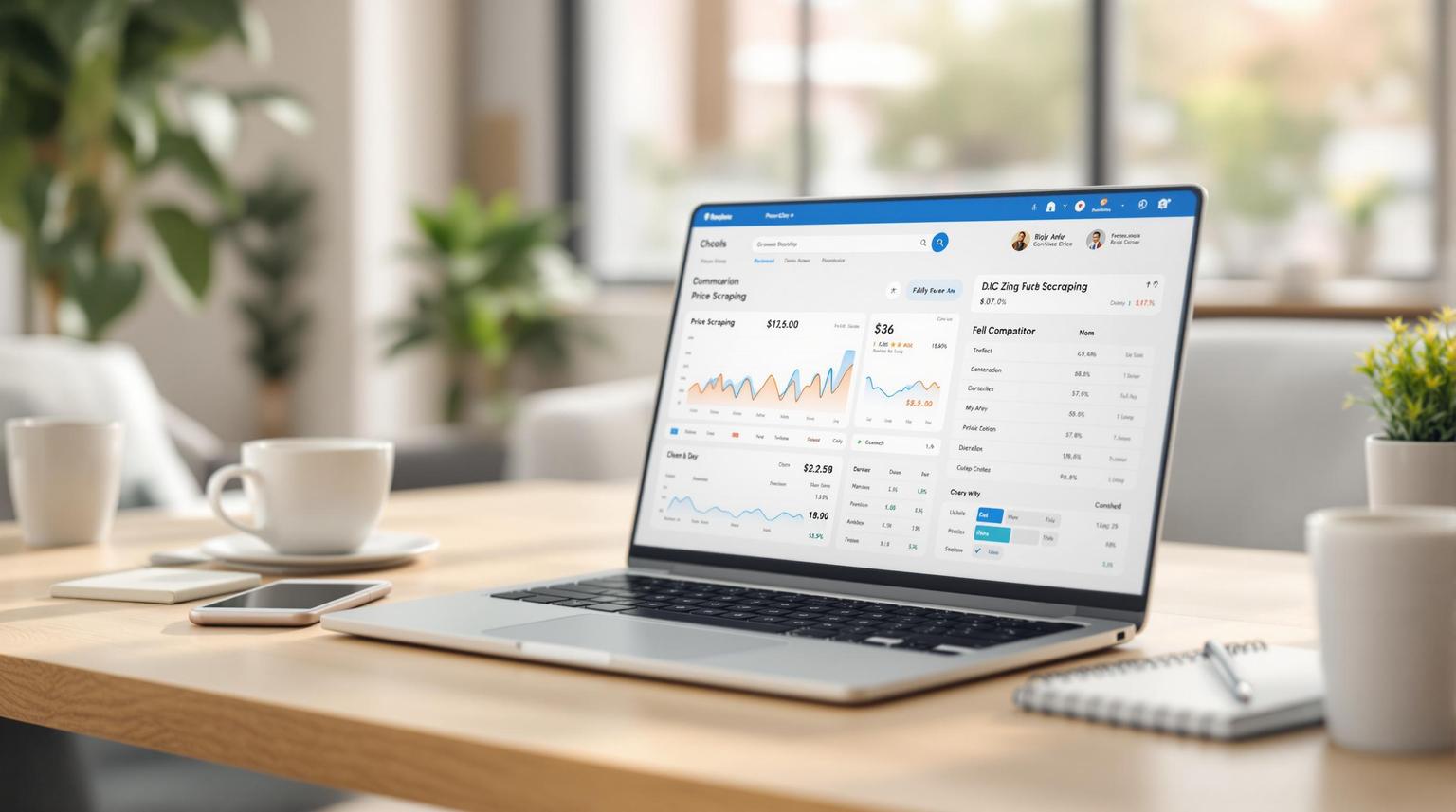Understanding your competition through price analysis

February 13, 2025
Price analysis helps businesses make smarter decisions by understanding competitor pricing and market trends. Here's what you need to know:
- Why It Matters: Pricing impacts market position, profits, and customer trust. For example, Amazon adjusts prices millions of times daily, securing a 37.8% market share.
- Key Benefits:
- Boost profits by 2-7%.
- Improve sales by up to 20%.
- Enhance inventory management and customer loyalty.
- How to Do It:
- Use metrics like price index, elasticity, and margin analysis.
- Leverage tools like web scraping, APIs, or AI-powered platforms.
- Implement strategies like dynamic or value-based pricing.
- Real-World Success: Companies like Airbnb and Wayfair have increased revenue and margins using data-driven pricing strategies.
- Stay Compliant: Follow legal guidelines like GDPR and ethical data collection practices.
Quick Comparison of Data Collection Methods
| Method | Advantages | Challenges |
|---|---|---|
| Web Scraping | Flexible, real-time updates | Risk of site blocking |
| API Integration | Reliable, structured data | Usage limits, subscription fees |
| Hybrid Approach | Combines strengths of both | More complex to manage |
Start by identifying competitors, selecting tools, and analyzing key metrics to optimize your pricing strategy.
Price Analysis Basics
Understanding pricing dynamics starts with mastering key metrics that highlight competitive positioning. These metrics, when paired with the right tools, help businesses make informed pricing decisions.
Key Price Analysis Measurements
Several core metrics are essential for evaluating market position. Each sheds light on pricing trends and competitive dynamics:
| Measurement Type | Purpose | Impact |
|---|---|---|
| Price Index | Compares average prices across markets | Highlights pricing trends and position |
| Price Elasticity | Measures demand response to price changes | Helps pinpoint the best price point |
| Competitive Price Ratio | Compares prices to competitor averages | Ensures competitive pricing strategies |
| Price Dispersion | Analyzes variations across sellers | Identifies gaps or opportunities |
| Margin Analysis | Examines profit margins vs. competitors | Balances profits with market share |
For example, Wayfair leveraged AI to track these metrics, which led to a 7.2% increase in revenue and a 2.5% rise in margins within just six months.
Price Analysis Methods
Modern price analysis blends multiple approaches to maximize effectiveness:
Dynamic Pricing Analysis
This approach adjusts prices in real time based on market trends and competitor actions. Companies using competitive pricing tools have seen profit margins grow by an average of 16%.
Value-Based Analysis
Instead of focusing solely on competitors, this method emphasizes the value customers perceive. Since most shoppers compare prices before buying, understanding value perception is key to pricing success.
Market Positioning Analysis
This method evaluates how pricing aligns with market ranges and its impact on brand perception. With 80% of shoppers regularly using price comparison websites, positioning plays a critical role.
"Analyzing 100 million data points daily lets us optimize pricing across our product range", says Wayfair CDO Jin Qu.
Choosing the right method depends on business goals, all while staying flexible to market changes.
Price Analysis Tools and Methods
To make the most of price analysis, businesses need tools that efficiently collect and process competitor data while aligning with their operational goals. Today’s technology offers a range of options, from basic scraping tools to advanced platforms powered by artificial intelligence.
Getting Price Data: Scraping and APIs
There are two main ways to gather price data: web scraping and API integration. Each has its strengths and limitations, making them suitable for different business needs.
Web scraping tools automatically pull pricing information from competitor websites. They’re great for large-scale data collection, but challenges like dynamic content and IP blocking can complicate the process. On the other hand, API integration provides structured and reliable access to pricing data through official channels. While more stable, APIs often come with usage limits and subscription fees.
| Method | Advantages | Challenges |
|---|---|---|
| Web Scraping | Flexible for large-scale data, No API fees, Real-time updates | Risk of site blocking, Maintenance required, Potential data accuracy issues |
| API Integration | Reliable and structured data, Stable access | Usage limits, Subscription costs, May not cover all data needs |
| Hybrid Approach | Combines strengths of both methods, Offers redundancy | Can be more complex to manage |
Selecting Price Analysis Software
Choosing the right price analysis software depends on your business’s specific needs. The best tools offer features like real-time monitoring, customizable alerts for price changes, integration with existing systems, historical data tracking, and automated pricing rules.
For instance, ShoppingScraper specializes in tracking prices on Google Shopping and major marketplaces, while Dealavo uses AI to detect pricing patterns. Large enterprises often combine multiple tools for broader coverage, while smaller businesses might prefer streamlined solutions. These tools help companies implement dynamic pricing strategies, much like market leaders such as Amazon, turning raw data into actionable insights.
Price Analysis in Practice
Modern businesses are leveraging automated systems to fine-tune pricing strategies, ensuring they stay competitive while maintaining profitability. These systems use real-time data streams to evaluate competitor prices and market demand, enabling dynamic adjustments.
Live Price Adjustment Systems
Today's price analysis systems rely on real-time data and advanced algorithms to continuously optimize pricing. They analyze multiple factors, such as competitor pricing, inventory levels, and market demand, to make informed decisions.
Here’s a breakdown of how these systems work:
| Component | Function |
|---|---|
| Data Collection | Collects real-time data on competitors and market trends |
| Analysis Engine | Processes data using rules and machine learning algorithms |
| Pricing Execution | Updates prices automatically across sales channels |
These tools bring the earlier-discussed metrics and methods into action, making pricing strategies more precise and responsive.
Price Analysis Examples
Some companies have seen impressive results by adopting advanced price analysis strategies:
- Otto, a German e-commerce company, used machine learning to improve demand forecasting. This cut surplus stock by 20%, giving them an edge over competitors in the fashion retail space.
- Best Buy adapted its pricing during the pandemic by matching competitors on key items while emphasizing value-added services. This approach drove a 242% growth in online sales, helping them compete with Amazon during a surge in online shopping.
- Airbnb employs dynamic pricing to benefit both hosts and users. By analyzing factors like local events and seasonal demand, their system has helped hosts boost earnings by up to 43%.
For smaller businesses, tools like ShoppingScraper make price monitoring accessible without requiring large-scale infrastructure. By tracking prices on platforms like Google Shopping and major marketplaces, these tools empower businesses to make smarter pricing decisions based on real-time insights.
sbb-itb-65e392b
Legal Requirements and Ethics
Price analysis isn't just about getting the numbers right - it also requires adherence to legal standards. Companies need to combine competitive research with compliance to avoid penalties and maintain their market position.
Data Collection Laws
Businesses must comply with various global data regulations. Here's a quick look at key laws and their requirements:
| Regulation | Requirements | Penalties |
|---|---|---|
| GDPR (EU) | Limit data collection, protect user privacy | €20 million or 4% of global turnover |
| CCPA (California) | Ensure consumer rights and transparency | $7,500 per intentional violation |
| CFAA (US) | Gain proper authorization for system access | Criminal charges and civil penalties |
For example, in 2019, the US Ninth Circuit Court of Appeals ruled that automated web scraping of publicly available data doesn't violate the CFAA. However, this ruling doesn't give free rein to collect data without restrictions.
Responsible Data Collection Methods
Ethical Web Scraping: To stay ethical, follow these practices:
- Respect robots.txt guidelines
- Limit the frequency of requests
- Clearly identify bots during operations
- Collect only publicly available information
- Set and follow defined data retention timelines
Data Protection Measures: Safeguards to ensure compliance include:
- Anonymizing collected data to eliminate personal identifiers
- Defining clear retention periods for stored information
- Using secure storage solutions
- Conducting regular compliance audits
- Keeping documentation ready for audits
Conclusion: Steps Forward
Key Takeaways
After examining legal structures and practical methods, businesses should prioritize putting these strategies into practice. Research shows that pricing analysis plays a critical role in boosting competitiveness and improving profit margins in e-commerce operations.
Here’s what makes pricing analysis successful:
- Thorough analysis can lead to higher profit margins.
- Automated tracking allows for quick, real-time adjustments.
- Adhering to regulations ensures proper implementation.
- Dynamic pricing systems have been shown to improve margins by 16%.
Action Plan
Using the compliant strategies discussed earlier, here’s a simple roadmap to get started:
| Phase | Action Items | Expected Outcomes |
|---|---|---|
| Planning | Identify key competitors/products, set monitoring frequency | A clear picture of the competitive landscape |
| Tool Selection | Research and implement pricing tools | A system for real-time monitoring aligned with dynamic pricing goals |
| Data Collection | Start compliant monitoring, gather pricing data | Consistent insights into pricing trends |
| Analysis | Establish KPIs, set up alerts | Actionable intelligence for pricing |
| Implementation | Roll out dynamic pricing strategies, train the team, and launch a pilot program | A refined and responsive pricing approach |
For those ready to take action, here’s a quick-start guide:
- Start with Manual Monitoring: Focus on your top 10 products and 3-5 key competitors. This step helps you recognize pricing trends before investing in automation.
- Introduce Basic Automation: Use simple data collection tools to measure ROI before committing to more advanced systems.
-
Analyze Data Effectively: Pay attention to critical factors like:
- Pricing fluctuations
- Competitor reaction times
- How customers perceive value
FAQs
How to analyze competitor pricing?
Analyzing competitor pricing requires a clear plan that combines data gathering with thoughtful analysis. Here's how you can approach it step by step:
Step 1: Identify Your Competitors
Pinpoint the competitors that directly impact your target audience's buying decisions.
Step 2: Select Appropriate Tools
Choose tools based on the size of your business:
| Business Size | Suggested Tools |
|---|---|
| Small | Simple scraping tools + Google Alerts |
| Mid-market | ShoppingScraper Growth + Prisync |
| Enterprise | Custom API setups + AI platforms |
Step 3: Collect Pricing Data
Leverage automated tools like ShoppingScraper to pull up-to-date pricing information from various marketplaces.
Step 4: Monitor Key Metrics
Pay attention to critical factors like:
- How your prices compare to competitors
- Patterns in promotions
- Profit margin thresholds for specific categories
- Shifts in demand
Step 5: Use AI for Analysis
AI tools can link pricing data with inventory and demand trends. These insights can then feed into dynamic pricing systems to help fine-tune your strategies. Larger businesses often process vast amounts of data daily to make informed pricing decisions.
Stay Compliant
When collecting data, ensure you're following these guidelines:
- Adhere to website terms of service
- Comply with data privacy laws
- Use only publicly accessible information
- Employ ethical data collection methods
For more details on ethical practices, check out the Legal Requirements and Ethics section.
Related Blog Posts












